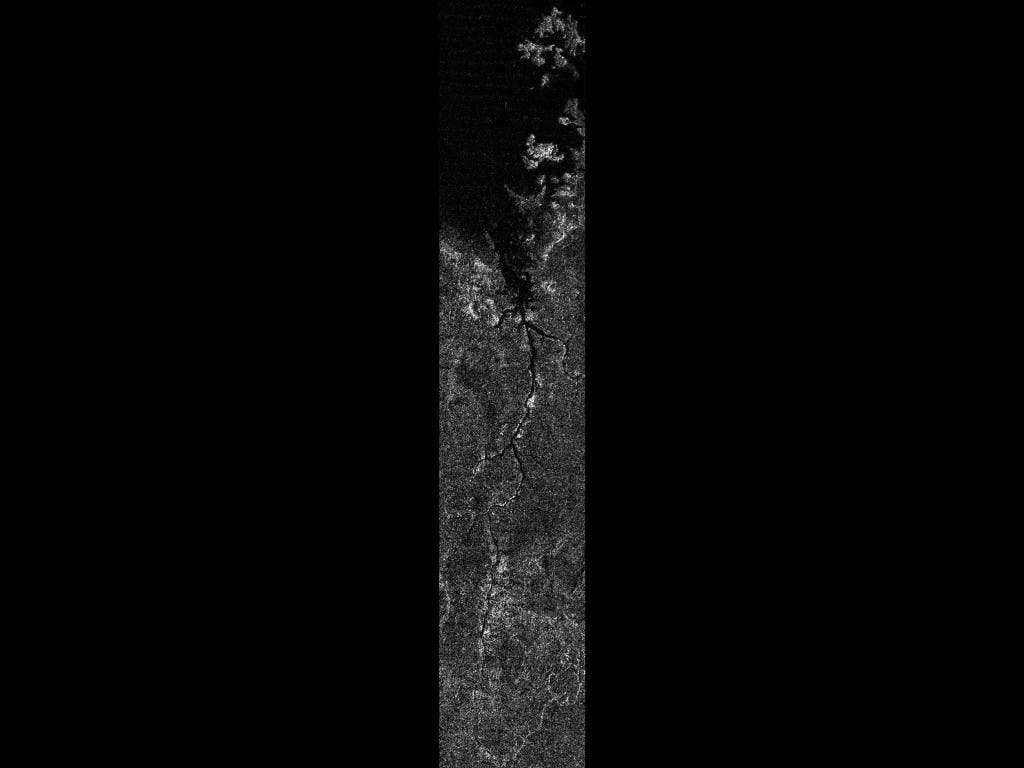Scientists operating the Cassini spacecraft have observed what seems to be a miniature, extraterrestrial replica of the Nile river on the surface of Titan, one of Saturn’s many moons.
An extraterrestrial hydrocarbon river

The valley stretches more than 400 kilometers from it’s “spring” to a large sea; this is the first time such a system has been observed in such resolution somewhere else than on Earth. Scientists believe that the river, which is near Titan’s north polar area, is filled with liquid hydrocarbons because it appears dark on the high-res radar image – which means it has a smooth surface.
“Though there are some short, local meanders, the relative straightness of the river valley suggests it follows the trace of at least one fault, similar to other large rivers running into the southern margin of this same Titan sea,” said Jani Radebaugh, a Cassini radar team associate at Brigham Young University, Provo, Utah. “Such faults – fractures in Titan’s bedrock — may not imply plate tectonics, like on Earth, but still lead to the opening of basins and perhaps to the formation of the giant seas themselves.”
In geology, a fault is a planar discontinuity or a fracture in a volume of rock across which there has been significant displacement; on Earth, most faults appear as a result of tectonic stress, the largest one forming at tectonic plate boundaries.
Strangely similar

“Titan is the only place we’ve found besides Earth that has a liquid in continuous movement on its surface,” said Steve Wall, the radar deputy team lead, based at NASA‘s Jet Propulsion Laboratory, Pasadena, Calif. “This picture gives us a snapshot of a world in motion. Rain falls, and rivers move that rain to lakes and seas, where evaporation starts the cycle all over again. On Earth, the liquid is water; on Titan, it’s methane; but on both it affects most everything that happens.”
The Cassini-Huygens mission is a cooperative project of NASA, the European Space Agency and ASI, the Italian Space Agency.
Via NASA



